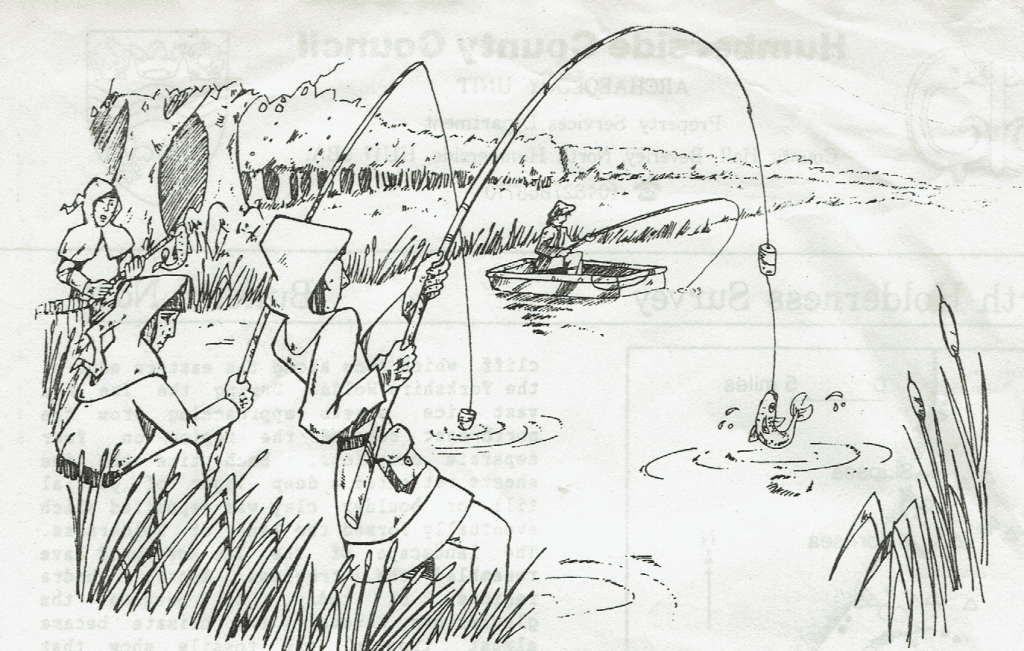
The sketch above is taken from the Bulletin (s.p.b.s) and given the caption ‘Fishing the mere in medieval times’. One point made in the Bulletin (s.p.b.s) is that the meres would have provided a range of resources for local settlers, reeds, wildfowl and fish (potentially). Later fish provided a staple food for ‘In the Church (universal Roman Catholic Church) calendar there were many Abstinence days when people were not supposed to eat meat’. It seems that in a more secular age revising this instruction might be a useful half-way house to vegetarianism. It is clear that, unlike today, eels massed in the meres and were considered a valuable food source. The fish would, of course, have been fresh-water species and would not have included species introduced later.
The Bulletin goes on to state that after the Reformation Abstinence days were less of an issue, but goes on to state that sea fishing had become more important, this an interesting line of thought. Interestingly, for me at least, at the moment I am preparing an article about George Poulson’s History of Holderness with especial focus on Hornsea. One fact which came to light was that one of the resident’s wills of the 14th century refered to a number of fishing boats he willed to relatives along with property and fishing paraphernalia. Clearly then Hornsea had a medieval fishing industry which must have sailed from a point on the Holderness coast east of the village (market town), distant from that village then. For this to be so access to the beach must then have been easier than today, at least in the Hornsea parish area. Indeed early county maps of East Yorkshire (see blogs from way back) all show the Holderness coast as being much more jagged than is the case today. Of course the plundering of a mere by coastal erosion would always have caused a. temporary at least, dent in the coastline.